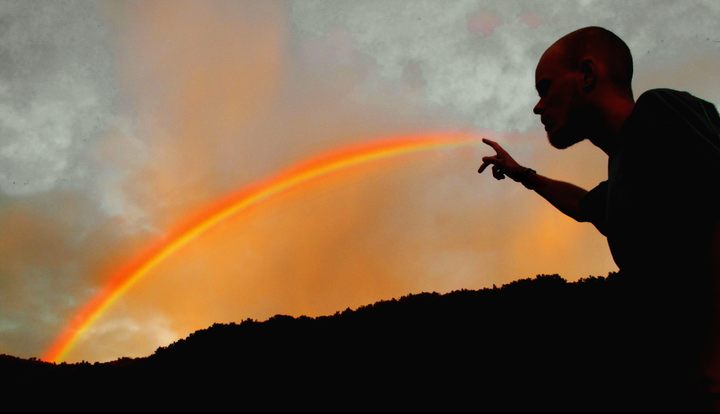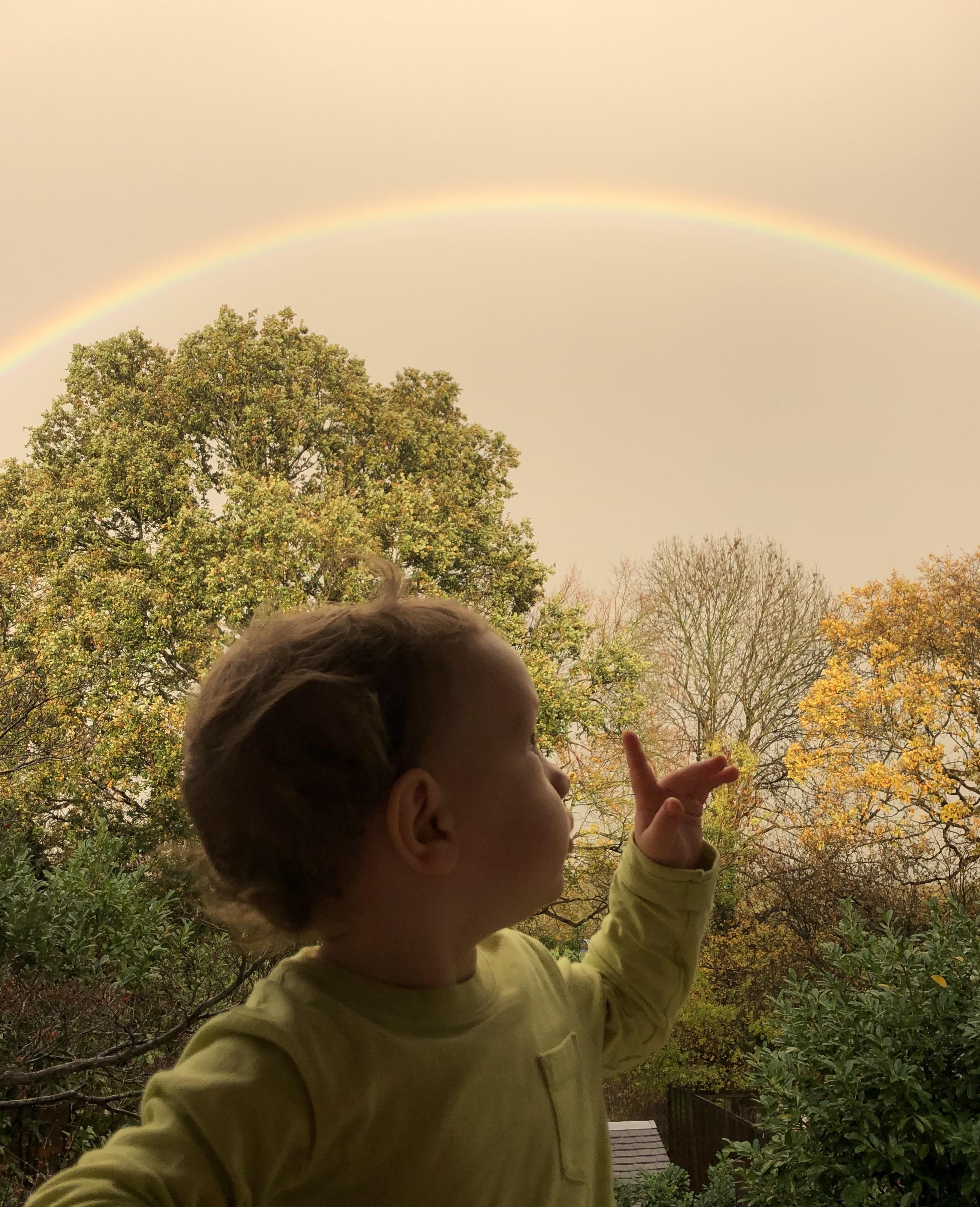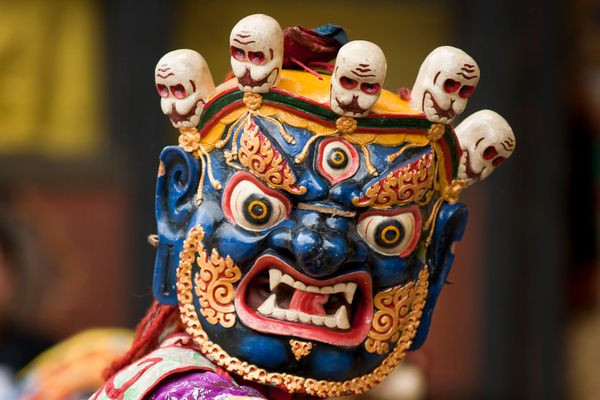
Even Rainbows Have a Dark Side
Humans were once united by the belief that you should never, ever point at one.
When a rainbow appeared in the sky over Tugu, a community in the mountains outside of Jakarta,* Robert Blust did what came naturally: he pointed to it. The year was 1980, and Blust, then a professor at the University of Leiden in the Netherlands, was waiting for lunch with a group of teachers from around Indonesia. One of the teachers, seeing Blust’s gesture, politely informed him that, in Sumatra, pointing to rainbows was considered a no-no. Another chimed in to say the same was true where he came from, in a different part of the archipelago. Both had learned as children that if you broke the taboo, your finger would become bent like a rainbow.
The incident did not affect Blust’s finger, but it did bend the arc of his career. He’d stumbled on a puzzle that would occupy him on and off for the next forty years.
When Blust returned to the Netherlands, he was still thinking about the incident. “Something about the experience stayed in my mind,” he later wrote. He started combing ethnographies for traditional beliefs about rainbows. The first hint that he was on to something bigger, something truly boggling, came from a report of a prohibition on pointing to rainbows in India. “It did not take long for the shock to set in,” he wrote. The report suggested “the rainbow taboo”—as he would come to call the phenomenon—was not confined to Southeast Asia.

Blust began to cast a wider net. He sent questionnaires to colleagues and missionary stations around the world, inquiring about rainbows and taboos related to them. He would soon amass evidence for the rainbow taboo—in some form or another—in 124 cultures. The prohibition turned up in North America, among the Atsugewi of northern California and the Lakota of the northern plains; in remote parts of Australia and isolated islands in Melanesia; among the Nyabwa of Ivory Coast and the Kaiwá of Brazil. At one time it was present in Europe, too: one of the Grimm brothers noted it in his book on German mythology. The belief was not found in every culture, according to Blust’s search, but it was present globally, across all inhabited regions.
There was also more to the taboo than the vague idea that pointing to rainbows is bad. Blust found that it often came bundled with specific ideas about what would happen if you violated the taboo, ideas that varied from culture to culture. Most commonly, your finger would suffer the consequences: it might become bent or paralyzed, fall off, wither, rot, or swell, or develop warts, ulcers, or maggots. Less commonly—such as in parts of New Guinea and Australia—the ill effects would befall your mother. In most cases, it was specifically pointing with the index finger that was prohibited. It was fine to draw attention to a rainbow using your head, lips, nose, or tongue, or by forming your hand in a less “pointy” shape, such as a fist. A final recurring idea was that, should you accidentally point to a rainbow, there were remedies. You could wet the offending digit; or put it into a bodily cavity like your mouth, anus, or belly button; or, according to the Javanese version of the taboo, plunge it into a pile of buffalo dung.

Blust, now a professor of linguistics at the University of Hawaii at Manoa, first wrote up his findings about the rainbow taboo in 1998, but he had trouble getting them published, perhaps because of declining academic interest in universally shared ideas.. A few years ago I came across a brief reference to his manuscript. I promptly emailed Blust, asked to see the paper, and encouraged him to get the findings out. The article was published earlier this year in the academic journal Anthropos.
All the researchers I spoke to about Blust’s findings found the phenomenon remarkable. Helena Miton, a cognitive anthropologist who has studied other unexpectedly widespread ideas, had not previously heard of the taboo. “It’s a really intriguing case,” she says.
What could possibly motivate this bizarre belief? Blust proposes two key factors. The first is that, traditionally, rainbows were considered sacred, a manifestation of another realm. He writes that, accordingly, they were “greeted with that mixture of fear, awe and reverence generally accorded to spiritual things.” The second factor is that pointing is widely viewed as aggressive; guidebooks often advise travelers to avoid it.

Combine these two ingredients and you get the idea that one should not act aggressively toward a sacred being. Jamshid Tehrani, a professor of anthropology at Durham University, finds this two-part explanation convincing. In support of it, he notes that other pointing taboos appear in the world’s folklore. He also elaborates on reasons why rainbows may be seen as supernatural. They’re ephemeral. You can’t really get close to them. They defy our intuitions about physics, he says. “They seem to be both physically present and absent at the same time.”
Tehrani describes the rainbow taboo as a great example of a “cultural attractor.” The term refers to bits of culture—taboos, myths, superstitions, rituals—that get traction because they appeal to human psychology. Such ideas do not necessarily spring up fully formed and instantly alluring. Rather, as they pass from neighbor to neighbor and generation to generation, they mutate. “Through communication people can sharpen beliefs into their most compelling forms,” says Manvir Singh, an anthropologist.
After being honed in this way, some ideas prove so appealing they spread across cultural boundaries and stick around for centuries. Certain folk tales—Little Red Riding Hood, for instance—are found across vast geographic areas. But only a handful of cultural ideas—such as flood myths or the medical practice of bloodletting—seem to have a truly global reach. The rainbow taboo is one of the best documented of these, and certainly one of the most specific.
Beyond the factors Blust proposes, other features of the rainbow taboo may make it especially successful. For one, people tend to hang on to information about threats—such as to one’s finger or mother. Rumors about danger, too, spread fast. Things that trigger disgust also seem to be especially successful, a fact which could account for the warts, maggots, and dung in some versions of the taboo.
These psychological explanations may be spot on, but they do not tell us much about the actual history of this belief. Was it invented over and over in far-flung societies? Did it race around the world at some point, like an urban legend? Could it be a relic from some ancient panhuman culture, retained in some places but lost in others?
“Origin questions are really difficult,” cautions Miton. Even more so with beliefs that have no material form and thus can’t be dated, she adds. The worldwide presence of the rainbow taboo could be due to some mix of independent development, viral spread, and retention across millennia. Blust suggests it may have its origins in the Paleolithic, but also notes that it was probably repeatedly lost and reinvented.
It’s plausible then that at some point deep in our history the rainbow taboo was a universal belief, or at least near universal. Where does it stand today? Blust’s research was conducted primarily in the 1980s, and some of his sources go back to the 1800s. Has the belief vanished in the time since?

No—or at least not entirely. It is still known in Southeast Asia, where Blust first learned of it. Nick Enfield, a linguistic anthropologist at the University of Sydney, had previously observed the taboo while conducting fieldwork in Laos. When I emailed him for more details, he asked an elderly man in Vientiane, who told him the taboo was still something the “old people” talk about. But, Enfield notes, it does not appear to be taken very seriously, and may be more something one teases children about.
Prakaiwan Vajrabhaya, a linguist and researcher from Bangkok who studied gestures for her PhD, told me a version of the idea still circulates as a superstition around Thailand. She only dimly remembers hearing about it herself, but she showed me mentions of it on Thai websites and social media. “There’s a lot of conversation about this. It’s a fun thing to talk about.” However, she notes that most of the online discussions focus on why Thai parents would tell their children such a ridiculous thing.
A curious belief—once ubiquitous, possibly even universal—thus may be fading out. Many of the ingredients of the belief, however, are very much alive. Rainbows still have an undeniable luster, and the impulse to point to them is probably not going anywhere. Vajrabhaya called the gesture a natural human response. “It’s a very fundamental reaction to something that is extraordinary,’ she says.
*Correction: The original version of this story confused Tugu, a community in the mountains southeast of Jakarta, with a neighborhood of the same name in Jakarta. The rainbow appeared in the mountains.















Follow us on Twitter to get the latest on the world's hidden wonders.
Like us on Facebook to get the latest on the world's hidden wonders.
Follow us on Twitter Like us on Facebook